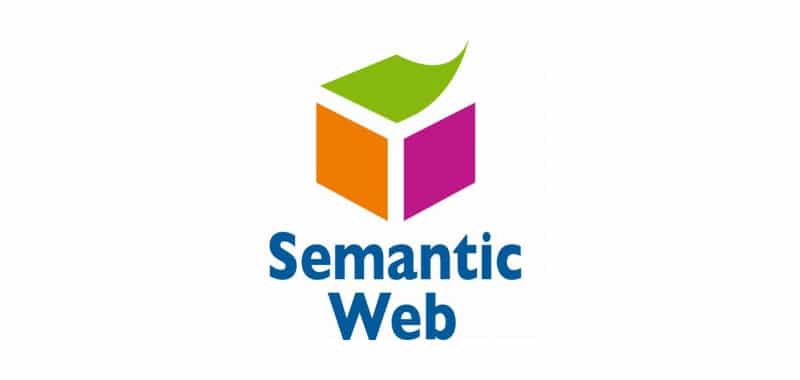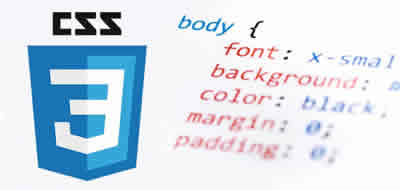Semantic Web, definition, history and characteristics
It is an extension of the current Web; the information gets a definite meaning that allows computers and people to work in cooperation.

The representation in that current Web is based, basically describes how the information displays, but not its meaning.
This implies that the results substantiate their prosecutions in keywords without any semantic relationship with the contents of the pages.
The Semantic Web, as a new vision, proposes to add a descriptive component to the available resources, that extends the existing representations.
We can stop talking about the semantic Web as if it were a project for the future. The applications and systems that make use of technologies developed under this World Wide Web Consortium (W3C) project are plenty.
The success these technologies have achieved is because its application is completely transparent to the end user.
At one point it begins to experience that certain search engines work better or provide advanced filtering capabilities or presentation of results.
Suddenly new possibilities in social networks allow to increase the services available in them, customizing them according to the tastes and preferences of users.
On the Web, services begin to emerge that allow simultaneously to see hundreds of catalogs of libraries or museums.
It is even possible to include in our website content published elsewhere in a very simple way.
Many of these services are developed with semantic Web technologies, which offer great potential of integration and reuse of data.
For this reason, it is of great interest to provide a simple and global overview of the Ssemantic Web to reach professionals, teachers, students and non-specialists interested in the subject.
There are numerous examples of cases where those who develop technologies and tools are not the same as the subsequently applied, used and that provide new knowledge and experiences through their use, enabling improvement and subsequent evolution.
A little bit of history
Not many years ago, back in the beginning of the 1980s, there were many who predicted a new world.
In that vision, perhaps based on the emergence of personal computer, humans would have access to large repositories of information.
The door would be the computer, and data, stored in media of large capacity offered new possibilities for integration.
It was not long before the concept of multimedia showed. A unique support for the textual and audiovisual information, which would allow the development of closed, upgradeable products with new editions. In a consumer society, it was just another product.
The emergence and spread of CD-ROM and computer support contributed to the creation of yearbooks, encyclopedias, databases, educational and informative apps, magazines and all types of wide range applications that were updated periodically.
In these environments, the search and query of information used a predictive and a prioristic model. Users could only access information through more or less access routes defined by the system designers.
The information could be located through forms, classifications and recovery environments whose dynamics of use and contents that are not operated did not vary considerably.
It was a scenario where queriesto the online database were reserved for very specific users (usually researchers) and almost always through an intermediary, a documentary.
Of course the search for information was made on textual information, usually unstructured and even plain.
The introduction of the Internet in all areas of our society, beyond the scientific or academic use, was only a matter of time and revolutionized the scenario previously described.
Applications like e-mail or the Web, have taken much weight in the development of digital content online, that social networks, band online services or eGovernment becomes unthinkable without these tools.
As a result, the Web has become an everyday tool for the exchange of information in our society, exceeding media such as television, and has become, along with paper, in one of the most important means of publication in today's society.
Therefore, the current Web has evolved into uses that have transcended the original idea of Tim Berners-Lee.
We are no longer talking about a system to publish and communicate results of experiments and research.
On that Web, it was based on the interconnection of documents using hypertext links, new tools through the development of programming languages to the Web and its integration with database systemshave been created.
The concept of Content Management System thinks the Web as a universal platform for the creation of all kinds of tools, which use of the user only needs one essential software: the Web browser.
Users began to interact with the Web beyond search and retrieval of information.
The functionality of textual and audiovisual content creation and communication between individuals and groups crystallized in a new generation of tools known as Web 2.0 or Social Web, designed to facilitate the connection between people.
The human factor ceased to be a passive element to become an active agent in the Web.
The fundamental idea is focused on networking and communities of users working with a number of Web-based applications like blogging services, publishing services of multimedia content, social networks or wikis.
It’s about a particular use of the Web, which encourages collaboration to disseminate and share information quickly and easily.
However, we must have in mind that this situation involves a series of problems derived from the very nature of a web in which users participate.
There are huge amounts of disorganized, duplicated or outdated resources, among which find the information ends up resulting in hard work.
Web search engines, altough they have improved in recent years, they continue cataloging only a small portion of the Web and sometimes produce results that are irrelevant and often inaccurate or impossible to find.
This is because the amount, structure and originality of content of Web contenthas not evolved alongside as posting proccesses have.
There are lots of duplicate pages, as many users prefer to copy content rather than reference them with hypertext links.
Many pages make improper use of HTML metadata, distorting its usefulness in the search processes.
Nor is it possible to distinguish in all cases the resource type recovered during the search: an info document, a record of an application on a paid download service, an entry in a discussion forum, etc.
In this context, Web browsers are sometimes incapable of providing useful results.
From the information retrieval on the Webpoint of view,it is required metadata that applies standard models for the description of resources required.
In addition, its development and use not only would improve Web browsers, but also broaden the horizons of the Web for the exchange and processing of data between applications automatically.
XML has been used for exchanging data since some time ago so that they are interoperable at a syntactic level. However, the semantic Web proposes the use of a basic data model as RDF that extends interoperability at the semantic level.
Besides the Semantic Web is organized into a multilevel structure that ranges from simple description of metadata resourcesto the definition of ontologies and inference rules.
What is semantic Web?
To know what is the Semantic Web, it is necessary to establish the basic principles, both conceptual and technology on which it sits.
Besides knowing precisely what we mean when we use the term "Semantic Web", it is also essential to know its architecture through a model that shows both its elements such as dynamic around which the various technological developments are linked and have led us from the original Web to the Semantic Web.
Defining an idea
The Semantic Web is not a separate Web from the originally one developed by Tim Berners-Lee. As Web 2.0 is a particular use of toolkits and technologies.
The developments of the Semantic Web are based on a number of approaches and quite clear ideas.
In this sense, Hendler, Berners-Lee and Miller (2002) offer the following definition of semantic Web:
"The Semantic Web is an extension of the current Web in which the available information is given a well-defined meaning enabling computers and people to work in cooperation. It is based on the idea of providing defined and linked Web data, allowing heterogeneous applications to locate, integrate, reason and reuse the information in the web."
We can identify several key aspects in this definition.
First, it refers to the semantic Web as an extension of the current Web. That is both the new ideas, concepts and uses of the Web, as the software tools used for developing the Semantic Web approaches must coexist with other applications in the current Web.
Another important point of the definition indicates the need to write down or check this information with data that provides a well-defined meaning (semantics) and shared so they can be linked.
Data entailment, represented by the semantic Web standards allows the reuse of work done by different entities.
Thus, a thesaurus developed and published on the Web by an institution in a format suitable for the Semantic Web could be used by a digital repository of some other institution to gain descriptors of their records.
At the bottom we find that in reality, the Semantic Web aims to develop mechanisms for the exchange of data between systems and, ultimately, communication between machine man, being effective and efficient.
Finally, the definition anticipates the possibility that computer systems might be able to manipulate and even rework information to specific target in form of problems that were set.
Similar definition is Berners-Lee offered along with Miller (2002), which also expose the way in which the W3C coordinates the achievement of these objectives:
"The Semantic Web is an extension of the current Web in which the available information is given a well-defined meaning enabling computers and people to work in cooperation. The W3C Semantic Web Activity, in collaboration with a large number of researchers and industrial partners, is responsible for the definition of standards and technologies that allow Web data to be defined and linked so they can be used for more efficient localization, automation, integration and reuse across applications."
From a more concrete approach and resuming the last part of the definition above, we can find on the official website that the W3C mantains about the Semantic Web on the following contents that can serve as a definition:
"The Semantic Web is the representation of data on the Web. It is a collaborative effort led by W3C with participation from a large number of researchers and industrial partners. It is based on the use of RDF, which integrates a variety of applications by using XML, for syntax and use of URLs for identification."
Given the coordination work of the W3C it is normal in the previous definition that two fundamental technologies associated with the development of the Semantic Web are included: the RDF specification and XML language. RDF (Resource Description Framework) is a data model developed by the W3C that provides a specification for metadata description on the Web.
Organizes information in the form of subject-predicate-object triples and allows its syntactic expression (serialization) using XML.
In addition it also uses the term Uniform Resource Identifier (URI) to identify universally and expandable a namespace of information resources.
From this definition, the existence of extensive collaboration, both scientific as designer and manufacturer of software for the adoption and use of common specifications for the Semantic Web is also apparent.
In short, it could be argued that the Semantic Web is focused on the creation of a shared spacefor the exchange of highly structured data space.
It’s information whose semantics is presented so as to be relatively "intelligible" for applications.
One of the most interesting aspects of the Semantic Web, which match most authors, is that, among other possible uses, provides new possibilities for communication between man and computer systems through services that combine multiple data sources that are treated for its processing or execution of information searches.
This eliminates the need to duplicate information: The data sources relate to each other regardless of their location on the Web.
Multimedia Resources:
La Web Semántica
MetaWeb
CITE ARTICLE
For homework, research, thesis, books, magazines, blogs or academic articles
APA Format Reference:
Delgado, Hugo. (2019).
Semantic Web, definition, history and characteristics.
Retrieved Nov 13, 2025, from
https://disenowebakus.net/en/semantic-web






